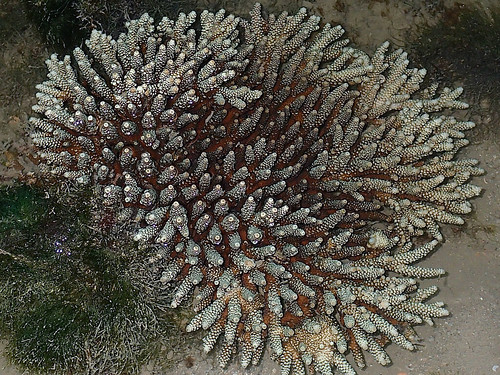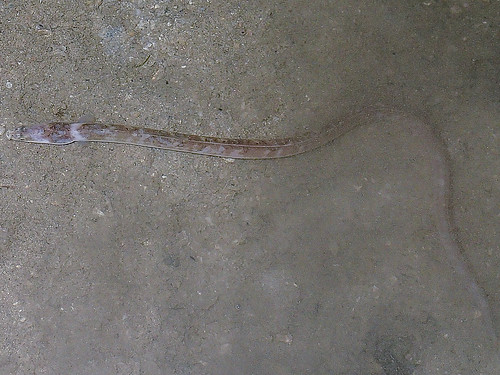Reef Walker
 May 27, 2019
May 27, 2019
Nudibranch enthusiast Toh Chay Hoon, has been diving and walking Singapore reefs for over a decade. The two ways of discovering our reef offer very different perspectives, and an opportunity to encounter different wildlife! Creatures that live in the intertidal zone (and that includes coral) have to be able to tolerate fresh water better than their deeper counterparts (because fresh water floats above salt water). Because wildlife in the intertidal zone differs from those that live in the deeper parts of the reef, they find interesting ways to live and feed – like the ribbon worm above! These spineless creatures may not look impressive, but it has a cousin from the North Sea that can grow to 60m! Despite their benign appearance, ribbon worms have highly developed muscles that allow them to contract their bodies, shrinking to a tenth of their extended length when threatened.
Acropora corals have many nooks and crannies. Many animals make their homes or build their nests in these fast growing coral colonies. This colony here appears to be bleaching. We hope it recovers soon!
Flatworms, like ribbon worms, may appear benign, but they certainly area beautiful! Some naturalists describe this one here as a Persian carpet flatworm, and we can certainly see why!
Certainly one of the most challenging things about visiting the reef during a low tide is getting to the reef during the low tide! While divers can simply drop off a boat and sink down toward the reef, walkers have to wade in while trying to avoid damaging the delicate reef as well as delicate feet! Singapore reefs are also home to stinging creatures like rays and stonefish, which are masters of camouflage, so intertidal walks do carry their own risks. But if you plan properly, you stand a great chance of seeing some wildlife that can be hard to spot while diving, like these shrimp! Can you spot the smaller one “riding” atop the larger one?
How many Costasiella sea slugs can you spot in this photo?
Snake eels (above) are commonly encountered in Hantu’s intertidal. They are neither snakes, nor are they eels, they are fish! So you need not fear -they pose you no danger. Some snake eels however, resemble seasnakes, which could be good for keeping away would-be predators, but might not be so good if it encounters a human who kills it for mistaking it as a snake.
The highlight of this reef walk was certainly this encounter with a very well hidden Spot-tail frogfish. These fish aren’t common, but we have sighted them a few times while diving and during reef walks. Most of the time, we probably just miss them! These sit-and-wait predators use a thin piece of skin positioned just above their mouths to lure curious fish toward them before sucking them into their large mouths at the speed of light! That’s why they are also sometimes known as anglerfish. This is a very clever strategy to save energy and not expose their camouflage. These fish trust their camouflage so much that they even lay their eggs on themselves – I mean, why lay your eggs on a rock when you look like a rock!?
See more fun and fantastic photos from this walk here.







 Posted in
Posted in 



 content rss
content rss
COMMENTS